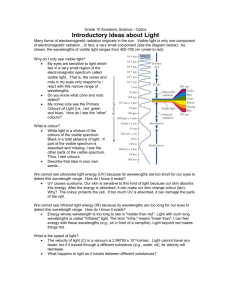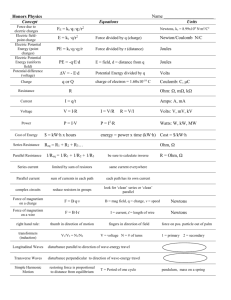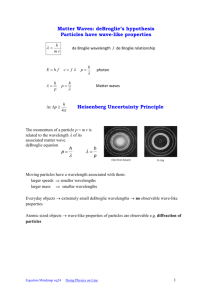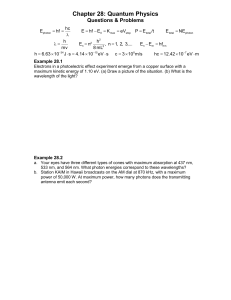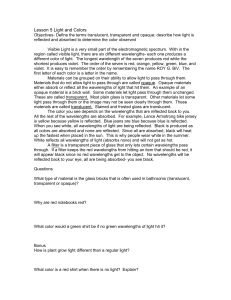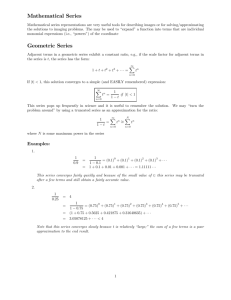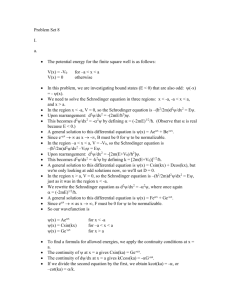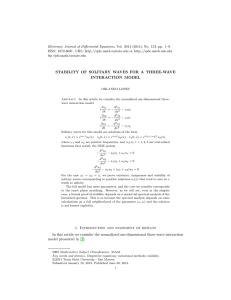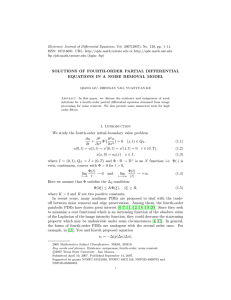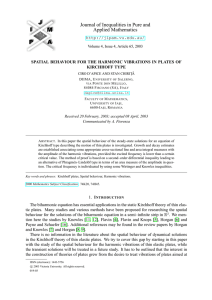Problem Set 6
advertisement
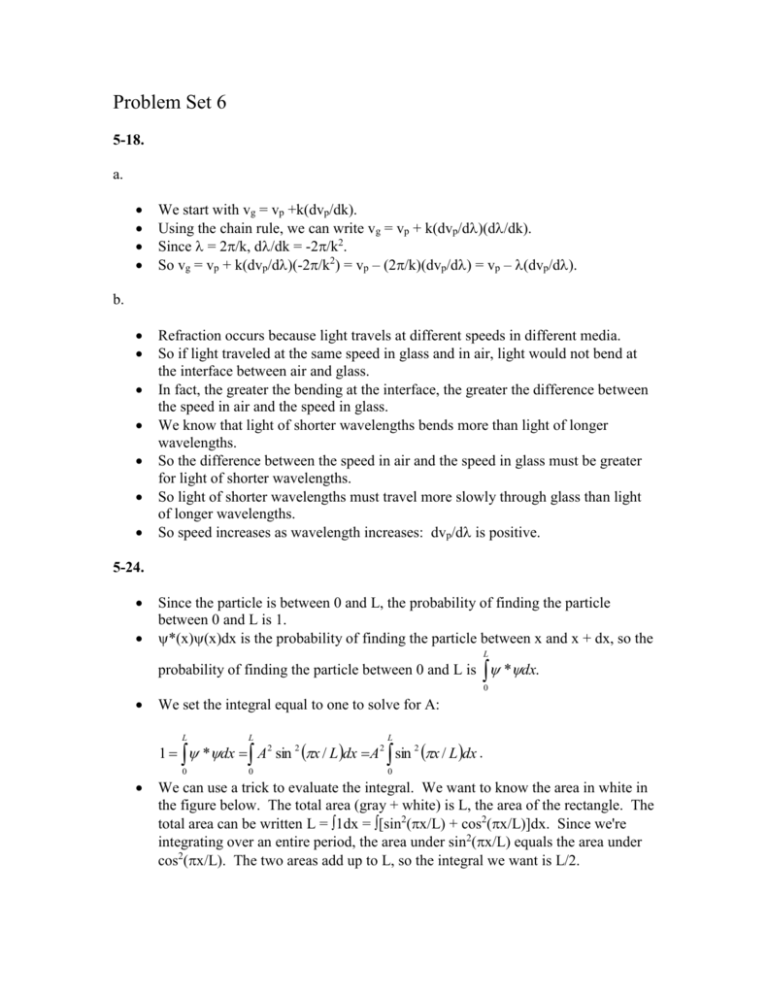
Problem Set 6 5-18. a. We start with vg = vp +k(dvp/dk). Using the chain rule, we can write vg = vp + k(dvp/d)(d/dk). Since = 2/k, d/dk = -2/k2. So vg = vp + k(dvp/d)(-2/k2) = vp – (2/k)(dvp/d) = vp – (dvp/d). Refraction occurs because light travels at different speeds in different media. So if light traveled at the same speed in glass and in air, light would not bend at the interface between air and glass. In fact, the greater the bending at the interface, the greater the difference between the speed in air and the speed in glass. We know that light of shorter wavelengths bends more than light of longer wavelengths. So the difference between the speed in air and the speed in glass must be greater for light of shorter wavelengths. So light of shorter wavelengths must travel more slowly through glass than light of longer wavelengths. So speed increases as wavelength increases: dvp/d is positive. b. 5-24. Since the particle is between 0 and L, the probability of finding the particle between 0 and L is 1. *(x)(x)dx is the probability of finding the particle between x and x + dx, so the L probability of finding the particle between 0 and L is *dx. 0 We set the integral equal to one to solve for A: L L 1 *dx A sin x / L dx A 2 0 0 2 L 2 sin x / Ldx . 2 0 We can use a trick to evaluate the integral. We want to know the area in white in the figure below. The total area (gray + white) is L, the area of the rectangle. The total area can be written L = 1dx = [sin2(x/L) + cos2(x/L)]dx. Since we're integrating over an entire period, the area under sin2(x/L) equals the area under cos2(x/L). The two areas add up to L, so the integral we want is L/2. 1 0 0 L 2 (2/L)1/2. So 1 = A (L/2), or A = In fact, all that is required for normalization is (A*)A = 2/L, so (2/L)1/2 is not the only solution. Other acceptable values for A are -(2/L)1/2, i(2/L)1/2, and -i(2/L)1/2. But it's conventional to keep the positive, real value. 5-25. Again, *(x)(x)dx the probability of finding the electron between x and x + dx, which is also the probability of finding the electron in a region dx centered around x. (These two definitions are within dx/2 of each other; a negligible difference.) *(x)(x)dx = A2exp(-x2/22)dx. a. *(0)(0)dx = A2dx b. *()()dx = A2e-1/2dx c. *(2)(2)dx = A2e-2dx d. *(x)(x) is greatest at x = 0. 5-42. a. We can find the allowed energies if we know the allowed wavelengths. The problem gives us the allowed wavelengths (though we could figure this out ourselves by requiring a node at each edge of the box)! The allowed wavelengths are given as = 2L/n, where n is an integer. So the allowed momenta are p = h/ = hn/(2L). So the allowed (kinetic) energies are mv2/2 = (mv)2/(2m) = p2/(2m) = h2n2/(8L2m). b. Since h = 6.63 10-34 Js, L = 10-10 m, and m = 9.1 10-31 kg, En = (6.63 10-34 Js)2n2/(8 10-20 m2 9.1 10-31 kg) = n26.04 10-18 J. So E1 = 6.04 10-18 J, E2 = 2.42 10-17 J, E3 = 5.44 10-17 J, E4 = 9.66 10-17 J, and E5 = 1.51 10-16 J. E5 = 25E1 E4 = 16E1 E3 = 9E1 E2 = 4E1 0 E1 c. f = E/h, so = c/f = hc/E = hc/[6.04 10-18 J(ni2 – nf2)] = 1.99 10-16 J.nm/[6.04 10-18 J(ni2 – nf2)] = 32.9 nm/(ni2 – nf2). So when ni = 2 and nf = 1, = 11.0 nm. d. When ni = 3 and nf = 2, = 6.58 nm. e. When ni = 5 and nf = 1, = 1.37 nm. 5-47. a. = h/p = h/(mv) = (6.63 10-34 J.s)/[(9.11 10-31 kg)(3 106 m/s)] = 0.243 nm b. Since v/c is so very small (0.01), the total relativistic energy of each original particle is mc2/(1 – v2/c2)1/2 mc2 = 0.511 MeV. So the energy of each resulting photon is 0.511 MeV. c. Since the initial momentum is zero (the electron and positron had equal and opposite momenta), the final momentum is zero. So the two photons must have equal and opposite momenta. p = 0.511 MeV/c d. = hc/E = (1240 eV/nm)/0.511 MeV = 0.00242 nm Is it a coincidence that this is ~1% of the de Broglie wavelength of the original particles? (Compare with part a.) No! The de Broglie wavelength for the original particles is h/p = h/(mv) = hc/(mcv) = hc/(mc2v/c) = hc/(Ev/c) = hc/(0.01E), which is 100 times larger than the photons' wavelength.
